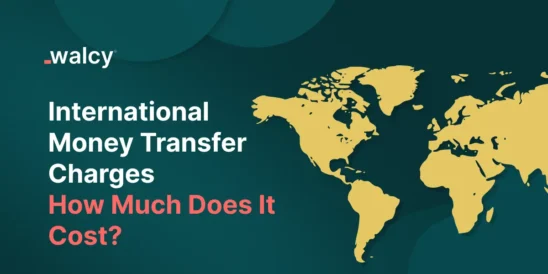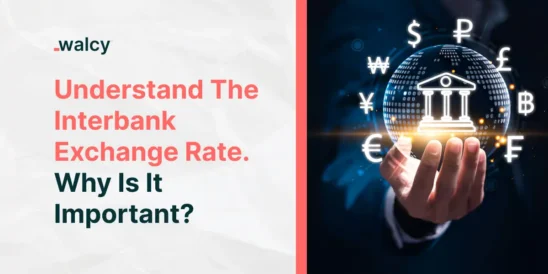The Foreign Exchange Rate (Forex rate) is one of the most important indicators of a country’s economic health. A country’s foreign exchange rate gives an insight into its economic stability, thus it is continually monitored and looked into.
If there’s one thing that can make anyone i.e., traveler or expat or business break out in a cold sweat, it’s those bothersome exchange rates. You may save your entire life’s savings and still feel misled by those devious small figures.
The broad spectrum of global currency markets and the various forces that drive them can be complicated and overwhelming. However, businesses can take proactive steps to protect their operations and bottom line from disruptive external factors.
In this blog, we will discuss everything you should know about foreign exchange rates. Moreover, we will outline the major factors affecting foreign exchange rates. To get started, let’s find out what foreign exchange rates mean.
Foreign Exchange Rate. Meaning and Definition
The foreign exchange rate is defined as the monetary value of one currency relative to another. The primary objective of foreign exchange is to contrast one currency to another and display how much they are worth.
Foreign exchange rates can also be defined as the rate at which a particular currency is exchanged for another, or as the value of one currency expressed based on another currency.
The exchange rate of a currency might be fixed or variable. The country’s central bank sets the fixed exchange rate, whereas the floating rate is influenced by market demand and supply fluctuations.
International currency exchange rates may fluctuate daily due to fluctuating dynamics of supply and demand in currencies from one country to another. For these reasons, it is critical to understand how foreign exchange rates are calculated while sending or receiving money across borders.
This blog investigates some of the primary elements that impact the currency exchange rates and explains the rationale for their volatility.
Read about: Understand The Mid-Market Exchange Rate | Deep Explanation.
Example Of An Exchange Rate
The true example of an exchange rate is the actual price businesses and customers will pay for a foreign product using their native currencies. For example, if the current US-Nepal exchange rate is 138 rupees per dollar, an American customer would require 1 dollar to purchase 138 rupees worth of products, and vice versa.
For example, if you have US dollars and wish to exchange them for Nepalese money, you would bring your US dollars (or bank card) to the foreign currency exchange shop and buy Nepalese currency with them. You will get the amount as per the exchange rate on the same day.
Importance of Exchange Rates
Exchange rates are one of the most significant things not just for business but for the whole country. Especially in a country like Nepal, where most things are being imported and the main source of revenue is Remittance, the exchange rate plays a vital role.
Changes in exchange rates have two main effects on businesses: they modify the cost of goods purchased from another country, and they influence the desirability of their products to international buyers.
Let’s say, you have an import-export business, or you sell or purchase your products to and from the international market.
The increase in the exchange rate of that country’s currency can lead to more expense. Similarly, the decrease in country currency value can be the factor of loss in import business.
An exchange rate is an important tool for economic policy. It should not be assumed that exchange rate policy determines a country’s trading potential. The exchange rate facilitates trade but does not change it.
In particular, where a country relies substantially on intermediate inputs, the exchange rate should be kept as stable as possible because exchange rate volatility will raise the prices of intermediate goods, causing the exchange rate to be passed on.
Still, a country should attempt to create goods and services with increasing technology inputs since the added value of products makes them less vulnerable to currency shocks.
The inflation in technological products is less dependent on currency rates than in agricultural and FMCG products.
Types of Exchange Rate Systems
There are mainly 3 types of foreign exchange rate systems. They are:
Fixed Exchange Rate System:
The pegged exchange rate, also known as the fixed exchange rate system, is a system in which the lower strength of the two currencies is pegged or bound to the stronger. The country’s government or central bank determines the fixed exchange rate, which is not affected by market forces.
To keep the currency rate stable, the central bank or government purchases foreign exchange when the rate of exchange rises and sells foreign currency when it falls. This procedure is known as pegging, and as a result, the fixed exchange rate system is also known as the pegged system.
Some advantages of this system include:
- It fosters currency stability and foreign trade.
- The currency’s value is fixed, thus it will be unaffected by market movements.
- This encourages foreign investment into the country.
- It helps to keep inflation rates constant in the economy.
Some limitations of this system include:
- Maintaining foreign reserves is essential for economic stability.
- In the course of an economic crisis, the government may lack the essential flexibility to recover.
A Flexible Exchange Rate System:
A flexible exchange rate system, often referred to as a floating exchange rate system, is influenced by market forces including demand and supply. Central banks and governments are not involved in the floating exchange rate system.
In contrast, a floating exchange rate is a system in which the forex market determines the price of the national currency based on supply and demand relative to other currencies. As opposed, a fixed exchange rate is determined fully or largely by the government.
The advantages of this system include:
- This exchange arrangement eliminates the need for foreign reserves.
- This method automatically adjusts any deficits or surpluses in the balance of payments.
Some of the limitations of this system’s s are:
- This encourages speculative trading, which may cause currency volatility in the market.
- If exchange rates become overly volatile, it may disrupt the flow of capital from one country to another, affecting international trade. It will harm all forms of trade and international investment.
Managed Floating Exchange Rate System:
A managed floating exchange rate system combines both fixed (managed) and floating exchange rate systems. Under this arrangement, central banks intervene or take part in the acquisition and sale of foreign currencies.
The advantages of this system include:
- It allows for some flexibility in currency value while allowing central banks to act when needed.
- It helps to reduce excessive volatility by allowing interventions to regulate currency changes.
- It enables progressive adjustments in response to economic changes while avoiding sudden shocks.
The limitations of this system include:
- Political objectives can affect central bank actions which can skew market dynamics.
- Frequent interventions may lead to doubt about the true market-determined value of currencies.
- It needs professional monitoring and targeted interventions, which can be difficult to handle effectively.
Different exchange rate systems have their pros and cons. Fixed exchange rates help to stabilize a country’s economy and attract foreign investment. Floating exchange rates operate best in countries with a stable and effective monetary policy.
Read about: Cross-Border Investment: Best Countries to Invest in 2025
Factors Affecting Exchange Rates
Several factors affect the determination of exchange rates. Some of them are:
Interest And Inflation Rates
The major factor that affects the determination of foreign exchange rates is the interest and inflation rates of the country. Currency exchange rates fluctuate in response to market inflation. A country’s currency will appreciate if its inflation rate is lower than that of another.
When inflation is low, the price of goods and services rises slowly. A country with a continually decreasing inflation rate has a rising currency value, whereas a country with higher inflation frequently sees depreciation in its currency, which is accompanied by higher interest rates.
Inflation, interest rates, and currency rates are all strongly correlated. Governments and central banks can influence exchange rates by raising interest rates. An example of this is “hot money”: the greater the interest rate, the more appealing the currency offer is to overseas investors.
These rates are a direct reflection of a country’s current and future economic performance, and they can impact the actions of currency traders and investors around the world. A rise in the rate of interest is typically followed by an increase in the value of the local currency.
This usually happens because the global economy grows too quickly and central banks attempt to reduce inflation.
Current Account Deficits
A current account deficit (CAD) is established when a country’s overall purchases of goods and services outweigh its exports. The current account represents the trade position of a nation with other nations.
It refers to the variation in value between products and services that are traded with other countries.
If a country purchases more than it sells, its trade balance is negative. It has a direct impact on the exchange rate since a country will require more foreign capital, which reduces demand for local currency.
It directly influences the exchange rate because a country will require more foreign capital, reducing demand for local currency. The excess supply of local money reduces its value against foreign currency.
Depreciation occurs when a country’s current account deficit is caused by spending more of its currency on importing goods than it earns from export sales.
Government Debt
Another major factor affecting the foreign exchange rate is government debt. Government debt refers to the total amount of outstanding invoices issued by the government in the past that still need to be repaid.
If any government is seen to be in huge debt for a long time, their country’s currency rates might probably decrease.
A country with a high level of debt to its economy is more unlikely to attract foreign investment and funds, which leads to inflation.
Existing foreign investors could also dispose of their bonds on the open market if they anticipate government debt to rise. This leads to in a surplus of the local currency, depreciating its value.
Terms of trade
Terms of trade are the ratio of export prices to import prices, which determines how much may be received in imports for each unit of exports.
Terms of trade are typically reported as an index based on a specific base year, indicating the proportional change in the prices of exports and imports.
A country’s terms of trade are enhanced when its export prices rise stronger than its import prices. This generates more revenue, which increases demand for the country’s currency and raises its value. This leads to an appreciation of the exchange rate.
If export prices rise in proportion to import prices, then the terms of trade are favorable. When import prices rise according to export prices, the terms of trade are believed to have deteriorated.
For an improvement scenario, more money is available for imports because they are cheaper for individuals and businesses in the country, increasing living standards.
Read about: How to Start an Import-Export Business in India?
Economic performance and political stability
The economic performance of the country is another important deciding factor for the foreign currency exchange rate. The better the country’s economic growth, the stronger the currency.
A country with a lower probability of political disturbances is more appealing to foreign investors, diverting investment away from other countries to a country with more stability in both politics and the economy.
An increase in foreign capital causes the value of the country’s native currency to rise.
A country with good financial and trade policies leaves no opportunity for ambiguity about the value of its currency. However, a country prone to political turmoil may see currency rates decline.
Similarly, A high GDP represents higher production rates, indicating more demand for the country’s products. A greater need for a country’s goods and services frequently results in higher demand for its currency.
Speculation
Speculation refers to the activity of guessing possible answers to a question without having enough information to be certain.
If a nation’s currency’s valuation is predicted to rise, investors will want more of that currency to profit in the short term. As a result, the currency’s value will grow due to increased demand.
As the value of the currency increases, correspondingly increases the exchange rate.
Recession
A recession signifies a prolonged fall in economic activity that can extend for months or even years. Experts define a recession as an extended period of negative gross domestic product (GDP), growing unemployment, declining consumer spending, and a contraction in income and industrial metrics.
The currency rate is supposed to decrease, if any nation is supposed to be under recession. When an economy faces a recession, interest rates are likely to decline, reducing its ability to attract foreign investments.
As a result, its currency depreciates in contrast to that of other countries, lowering the exchange rate.
Stock markets
Finally, the domestic stock market has a significant impact on the country’s foreign currency rates. The stock market and foreign exchange are among the global most economically traded markets. Traders frequently look for connections between markets to assist them predict prices.
When a domestic stock market grows, investors’ moods improve as it indicates that the country’s economy is performing well. As a result, foreign investors’ interest has surged, as needs local domestic currency.
When the stock market underperforms, a lack of trust causes investors to withdraw their funds back to their home currencies.
Conclusion
To sum up, foreign exchange rates are essential aspects of every individual as they are affected directly or indirectly. Having a strong and balanced currency indicates the growing economy of a country while a degrading and weak currency indicates unfavorable economic conditions.
The major types of exchange rate systems include fixed exchange rate systems, flexible exchange rate systems, and managed floating exchange rate systems.
The exchange rate is mostly affected and determined by analyzing different factors. Such factors include inflation, interest rates, political stability, economic conditions, government debt, recession, etc.
Do follow us on Facebook and LinkedIn, to stay connected with us.
Know more about foreign exchange services.
Know about the top PayPal alternatives.




